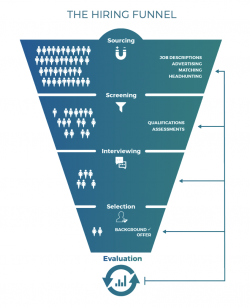Gender bias in the Online Job Search

Gender bias refers to the “unfair difference” in the way that both men and women are treated [2]. In the context of the online job search, this refers to the advantage male job seekers have versus female job seekers. The advancement of technology and big data has led to companies recruiting and hiring potential employees through the use of big data and artificial intelligence [3]. The use of algorithms in the job search process can perpetuate existing biases which raise ethical concerns regarding opportunities for females being blocked, and how systematic gender roles are disadvantaging female job seekers.
Evidence of Bias
Job Recruitment Algorithms
Job recruitment algorithms have been found to reinforce and perpetuate unconscious human gender bias [4]. Because job recruitment algorithms are trained on real-world data – and the real world is biased – the algorithms amplify this bias on a larger scale. Decision-making algorithms are “designed to mimic how a human would…choose a potential employee” and without careful consideration, algorithms can intensify bias in recruiting (4).
Utilizing real-world data to shape algorithms leads to algorithms producing biased outcomes. Algorithms make predictions by analyzing past data (2). If the past data includes biased judgments, then the algorithm’s predictions will also be biased. Facebook’s tool called “lookalike audience” allows advertisers – in this case, employers – to input a “source audience” that will dictate who Facebook advertises jobs to, based on a person’s similarities with this “source audience” (2). This tool is meant to help employers predict which users are most likely to apply for jobs. If an employer provides the lookalike tool with a dataset that does not include a lot of women, then Facebook will not advertise the job to women. Employers might use this tool to deliberately exclude certain groups, but there is also a possibility for employers to be unaware of the bias of their “source audience” (2).
Job Recommendation Algorithms
Algorithms Extending Human Bias
Ethical Implications
Algorithms Blocking Opportunities
Traditional Gender Roles Affect Outcomes
Looking Forward
Rethinking How Algorithms are Built
Transparent Algorithms
References
- ↑ Bogen, M. & Rieke, A. (2018). Help Wanted: An Examination of Hiring Algorithms, Equity, and Bias. Upturn. https://www.upturn.org/static/reports/2018/hiring-algorithms/files/Upturn%20--%20Help%20Wanted%20-%20An%20Exploration%20of%20Hiring%20Algorithms,%20Equity%20and%20Bias.pdf
- ↑ Cambridge Dictionary.(n.d.). Gender Bias. In Cambridge English Dictionary. https://dictionary.cambridge.org/us/dictionary/english/gender-bias
- ↑ Kim, P. T. (2019). Big data and artificial intelligence: New challenges for workplace equality. University of Louisville Law Review, 57(2), 313-328.
- ↑ Hanrahan, C. (2020, December 2. Job recruitment algorithms can amplify unconscious bias favouring men, new research finds. The ABC News. https://www.abc.net.au/news/2020-12-02/job-recruitment-algorithms-can-have-bias-against-women/12938870